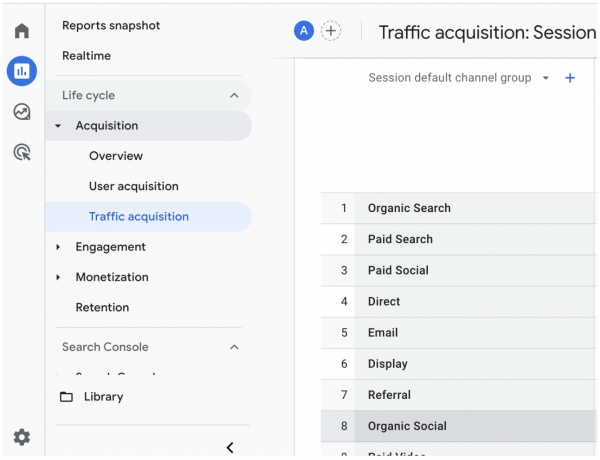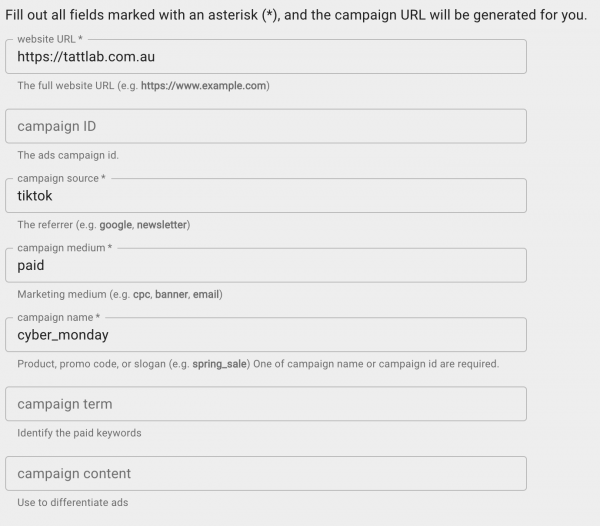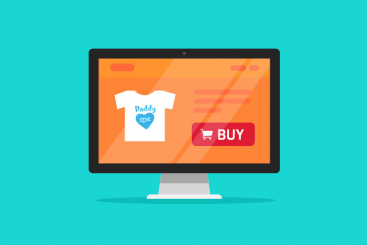How to Effortlessly Set Up UTM Tracking in GA4
Are you struggling to get an accurate view of your paid social campaigns in GA4? I mean, it can’t all be Organic Social.
You know your Facebook or TikTok Ads are working hard, but GA4 hasn’t made it easy to quantify these wins to your wider team.
Maybe a couple of UTM tags can help.
With a well-written UTM tag, you can bring all your marketing data (accurately) into one place: GA4.
In this guide, we’ll show you the easiest way to set up paid social UTM tracking for GA4, along with a few tips and tricks to consistently generate trackable URLs across a variety of social platforms.
What Are UTM Tags?
Ever click on a link and your address bar populates with a seemingly endless URL?
UTMs (a.k.a. Urchin Tracking Modules) are snippets of code hiding in plain sight, helping marketers everywhere get a better understanding of website traffic. They live at the end of a URL, separated by a question mark “?” within the link.
UTM tags track clicks leading back to a particular website and deliver valuable information about each click's source, medium, and other characteristics. These insights are then stored in Google Analytics. Marketers primarily use these tags to track the effectiveness of a digital campaign with multiple goals able to be tracked (e.g. conversions, traffic, leads, etc.).
3 Essential Parts of a UTM Link
Looking at a link with UTM elements can seem quite complicated without the proper context. In reality, UTM tracking is quite simple to set up, with only 3 required elements needed to get started. Once you get the hang of things, you can generate links instantly using a URL builder (more on this later).
The General Formula For Writing Tag Code is as follows:
Add a question mark “?” at the very start of a UTM tag, separating multiple tags with an ampersand “&”.
Campaign Source
Where is the traffic coming from? Facebook? Twitter? Or maybe a guest post on a different site? Use this parameter to identify the source of your traffic. This will in most cases be a platform or another website.
- Base UTM Code: utm_source
- Tag Example: utm_source=instagram
Campaign Medium
How is the user getting to the site? This could be a paid ad, an organic social post, or some form of influencer marketing (paid or unpaid). Use this parameter to identify the medium, or way by which the user arrives on site.
- Base UTM Code: utm_medium
- Tag Example: utm_medium=paid
Campaign Name
Make every campaign easy to identify with a name. The name could reference a sale season (e.g. Cyber Monday), a welcome offer (e.g. free shipping), or the name of an influencer attached to the campaign.
For example, a UTM for a Black Friday sale could read like this:
- Base UTM Code: utm_campaign
- Tag Example: utm_campaign=black_friday
Additional Tracking Parameters
While Source, Medium, and Campaign Name are required for Analytics to track the performance of your campaign, some marketing efforts require a bit more specificity. If that’s your situation, you can also incorporate the following parameters.
Campaign Term
Tracking a particular phrase or paid keyword? Tack on this bit of code at the end of your URL to record data across a particular search term.
- Base UTM Code: utm_term
- Tag Example: utm_term=best_cheesecake_recipes
Campaign Content
In most cases, you probably won’t run 1 ad variant across 1 platform. You’ll more likely have multiple ads for awareness, remarketing, and more, across various platforms with multiple size requirements (e.g. video, static, banner, etc.). Use this tag to differentiate between different ads within the same campaign.
- Base UTM Code: utm_content
- Tag Example: utm_content=banner_ad
How to Track Paid Social With UTMs
Now you know the basics for creating your own UTM tags for paid social. Let’s get into the details for the major platforms. We’ve tested this across the most recent versions of GA4, ensuring the templates are compatible with the newest version of Analytics.
Meta
For Meta ads, we prefer to use Dynamic UTMs.
These types of tags send live data directly from your Meta ads account to Analytics and can be set up to track the most popular marketing metrics. Because the data is coming directly from Meta, dynamic UTMs are easier to manage and automate than tags created manually.
Keep in mind that simple, concise naming conventions for your campaigns, ad sets and ads are key when building out dynamic UTMs. And if, for example, your campaign name was changed, the UTM will retain the original name of the campaign.
![]()
Base UTM Code: ?utm_source=facebook&utm_medium=paid&utm_source_platform={{placement}}&utm_campaign={{campaign.name}}&utm_term={{adset.name}}&utm_content={{ad.name}}
If you’d prefer not to use Dynamic parameters within Meta, simply update {campaign.name}, {adset.name}, and {ad.name} to values that best describe your campaign, audience and ad. A completed Meta example below:
Tag Example: https://tattlab.com.au/?utm_source=facebook&utm_medium=paid&utm_source_platform={{placement}}&utm_campaign={{campaign.name}}&utm_term={{adset.name}}&utm_content={{ad.name}}
Note: If running ads solely on Instagram (instead of Instagram & Facebook), change the UTM source to “instagram”. The {{placement}} field will also provide additional insight into where you’re ads served.
TikTok
Base UTM Code: ?utm_source=tiktok&utm_medium=paid&utm_source_platform=placement_name&utm_campaign=campaign_name
&utm_term=audience_name&utm_content=ad_name
To personalise this template for your use, simply update {campaign_name}, {audience_name}, and {ad_name} to values that best describe your campaign. A completed TikTok example below:
Tag Example: https://www.tattlab.com.au/?utm_source=tiktok&utm_medium=paid&utm_source_platform=tiktok_feed&utm_campaign=inkeeze_spark_ads
&utm_term=Remarketing-&utm_content=brookehogan
Base UTM Code: ?utm_source=linkedin&utm_medium=paid&utm_source_platform=placement_name&utm_campaign=campaign_name
&utm_term=audience_name&utm_content=ad_name
To personalise this template for your use, simply update {campaign_name}, {audience_name}, and {ad_name} to values that best describe your campaign. A completed LinkedIn example below:
Tag Example: https://www.tattlab.com.au/?utm_source=linkedin&utm_medium=paid&utm_source_platform=linkedin_feed&utm_campaign=recruitment_video_ads
&utm_term=Remarketing-&utm_content=etc_educators
Base UTM Code: ?utm_source=pinterest&utm_medium=paid&utm_source_platform=placement_name&utm_campaign=campaign_name
&utm_term=audience_name&utm_content=ad_name
To personalise this template for your use, simply update {campaign_name}, {audience_name}, and {ad_name} to values that best describe your campaign. A completed Pinterest example below:
Tag Example: https://www.tattlab.com.au/?utm_source=pinterest&utm_medium=paid&utm_source_platform=pinterest_feed&utm_campaign=farm_friends
&utm_term=Remarketing-&utm_content=cow_gif1
Where to Find Your Tracked Data
Your ads are live and getting clicks and conversions. Where do you find all that UTM data?
- Head over to Analytics.
- After logging in, click on the Reports tab in the left navigation.
- From there click on Acquisition.
- And then Traffic Acquisition (Ensure the dimension is set to Default Channel Group).
- Here you’ll find a list of marketing Channels and the data they have recorded so far.
- You can update the dimension above the table to 'Session Campaign' to view campaign-level data.

UTM Tracking Do’s & Don'ts
You’ve got the basics down for paid social UTM tagging. How do you extract the most data from each campaign? Scroll down to see suggestions on how to get the most value out of UTM tagging.
Do
Consider A/B testing
When running two ad variants within the same campaign UTMs are great at giving insight into which variant performed best. Just make sure to clearly name the ad variants to avoid confusion at the end of a campaign.
Use consistent naming conventions across your team
Make someone on your marketing team in charge of all UTM naming conventions. It could be worth making a handbook for your team to follow. Keeping a consistent naming structure will make your historical data much easier to follow and track down for reporting to clients or the wider team. Be inconsistent in this area and you run the risk of losing all the insights you’ve learned throughout multiple campaigns.
Don’t
Use multiple cases or spaces
UTM tags don’t like spaces. And every time they come across one in a URL, they are a bit of code further messing up your original link. If you want to add a space between words, we suggest using an underscore “_” instead.
Tagged URLS are also case-sensitive. If you accidentally type an uppercase letter in your link, Analytics will treat variations in case as totally different URLs. This makes your data quite messy.
Avoid all of this by making your entire link in lowercase. Lastly, avoid using symbols where possible. UTM tags already use symbols in their code (e.g. &, ?, =, etc.). Including your own could send the wrong signals to Analytics.
Don’t use UTM tags on internal links
When you get the hang of adding UTM tags to the end of your URLs, you may want to start adding them to everything! Keep in mind that these unique links perform best when they track traffic incoming from other parts of the web. Adding UTM tags on internal links will confuse Analytics and distort the picture of the user journey once they arrive on your site.
Leave the UTMs for links coming from social platforms, influencers, guest posts on other sites, and affiliate links.
Avoid Making Mistakes With This URL Builder From Google
You can copy and paste the above templates for your own use, but maybe your campaign requires a little more customisation?
Avoid making mistakes with the URL builder from Google. Plug in your parameters and done. You’ll have a URL ready to go with UTM tracking.

Start Tracking Paid Social in GA4
Incorporating UTM tags into your paid social campaigns can help you track and measure the success of your marketing efforts. With tagging, you’ll be able to identify which social campaigns are performing well and which ones need to be optimized alongside your search ads in GA4.
Want to learn how we crushed paid social and found new opportunities for one of our clients? Check out this case study on the luxury lifestyle brand, Saison.


